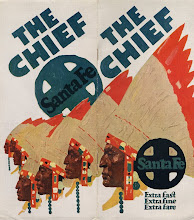

This past Monday, Dr. Lara Kriegel and eleven FIU students enrolled in her senior seminar: World’s Fairs, Exhibitions, and History, came up to our rare books and special collections library to meet the librarians and learn how to access the collection via our web catalog and how to schedule research appointments. Following the brief orientation, the students were treated to a presentation of original international exhibition materials aimed at giving them a chronological overview of the world’s fairs while simultaneously introducing them to themes that might serve to inspire their final research paper topics.

The library’s holdings of world’s fair materials is particularly rich with regard to the fairs ranging from the first major international exhibition—(the so-called “Crystal Palace” exhibition in London, 1851)—through the San Francisco and New York World’s Fairs in 1939-1940. Although we do have some materials from some of the later fairs, our collection is far less comprehensive for the post-World War Two period. Our rare books cataloguer, Dr. Nicolae Harsanyi, having recently delivered a paper dealing with Romania’s pavilions at various world’s fairs, addressed the students about the importance of the fairs in terms of national self-representation. It was also evident from the original materials laid out on the table how important certain fairs were in terms of promoting and disseminating new artistic and architectural styles.


Although we often think of the fairs in terms of education and entertainment, we also wanted to impress upon the students the idea that there was also a darker side to these expositions as the nations participating in the early exhibitions used the occasion to propagandize the audiences. In addition to the ubiquitous nationalistic “chest-beating” and games of one-upmanship played by rival countries, the West also used the fair to sell the attendees on the legitimacy of colonial and imperial projects. Many colonial expositions lauded the achievements of civilized nations and the “white man’s burden” of Christianizing and civilizing pagan “primitives” around the world. Many of these fairs shared the Orientalist tendencies of the age and “represented” colonial peoples as “others” in order to justify their economic imperialism under the guise of humanitarian campaigns. Other popular exhibits in these early fairs were those which glorified war by showcasing the latest military technological weaponry and warships. Even the entertainment provided in the Midways was far from politically-correct by today’s standards, perpetuating stereotypes with exhibitions of human oddities and zoos where “freaks” and “primitives” could be gawked at by “civilized” spectators.

World’s fairs organized during the worldwide depression were often courted by cities anxious to provide work for the idle and unemployed, to stimulate tourism, and to provide at least some temporary boost to the economic doldrums. The corporate presence and pavilions at these later fairs often rivaled those sponsored and built by many smaller nations and reflect their growing influence in modern society, economy, and life.








No comments:
Post a Comment